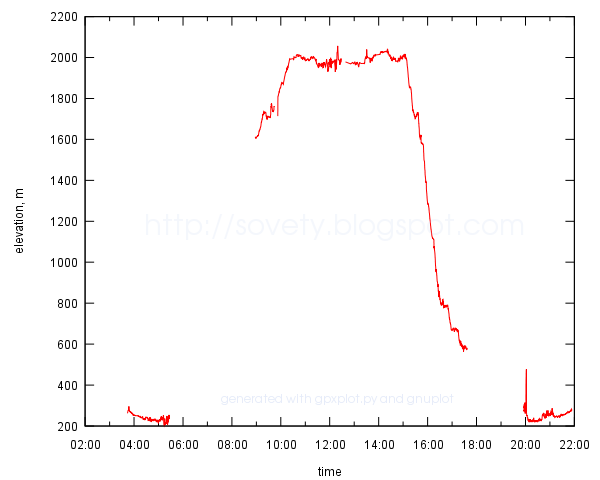I decided to bring together
LaTeX tips from my
other blog.
How to change line spacing?
To change spacing between baselines:
% to set one-and-half spacing
% put before \begin{document}
\renewcommand{\baselinestretch}{1.5}
More flexible way is provided by
setspace package. It allows to change line spacing for parts of the text. To use the package, add before
\begin{document}:
\usepackage{setspace}
\onehalfspacing % one-and-half spacing globally
% or \singlespacing % normal spacing
% or \doublespacing % double spacing
% or \setstretch{factor} % arbitrary spacing
Then after
\begin{document} you can use
onehalfspace and
doublespace environments:
\begin{onehalfspace}
This text will be set with one-and-half line spacing.
\end{onehalfspace}
\begin{doublespace}
This text will be set with double line spacing.
\end{doublespace}
How to change margins?
The easiest way is to use
geometry package, add before
\begin{document}:
\usepackage[left=2cm,right=2cm,top=2cm,bottom=2cm,bindingoffset=0cm]{geometry}To change layout and margins of the particular pages use
chngpage package.
How to fit the text on one page?
First, try to
\enlargethispage:
\enlargethispage{2\baselineskip} % add two more lines to this page
\pagebreak % finish the page
If you want to shrink the text, use the “starred” version
\enlargethispage*{length}:
\enlargethispage*{\baselineskip}
How to rotate a page?
Use
lscape package and the
landscape environment it provides to rotate arbitrary pages. This may be useful to fit wide tables or figures:
% before \begin{document}
\usepackage{lscape}
% after \begin{document}
...
\begin{landscape}
...
This text will appear on a rotated, i.e. landscape, page.
...
\end{landscape}
Why figure numbering is wrong?
Check your
figure environment.
\label should always go after
\caption.
\caption first,
\label second. The right template for the
figure is:
\begin{figure}
... % insert your figure here
\caption{Caption text}
\label{fig:myfigure}
\end{figure}
See also
figure numbers wrong in LaTeX.
How to make my own BibTeX style?
Fortunately, it is easy. Use
makebst.tex program. In my system I can run it as
$ latex /usr/share/texmf-texlive/tex/latex/custom-bib/makebst.tex
Choose
merlin as a template, choose any name for your style (e.g.
mystyle), answer all the questions patiently. Finally, copy ile
mystyle.bst to the directory with your article. Use it like this:
\bibliographystyle{mystyle}
\bibliography{bibfile}
How to enable/disable page numbering?
To disable page numbers:
\pagestyle{empty} % no page numbersTo enable page numbers:
\pagestyle{plain} % enable page numbersTo change it just for one page:
\thispagestyle{style}To do more fancy things, use
fancyhdr package.
How to make the PDF I produce with PDFLaTeX searchable?
Answer:
\usepackage{cmap}
How to strike-through or highlight the text?
To
strike through words in LaTeX use package
ulem:
% before \begin{document}:
\usepackage{ulem}
…
% in the text, after \begin{document}:
\sout{Wrong.} Right.
The result will be something like this:
Wrong. Right
To highlight words with different colour, use
xcolor package:
% before \begin{document}
\usepackage{xcolor}
…
% after \begin{document}
I want some words to \textcolor{red}{stand out}.Expect the result to be:
I want some words to be stand out.
If you want to change the background colour,
\colorbox will help you:
% to make text appear on whitish blue (blue 50% – white 50%)
\colorbox{blue!50!white}{Text on whitish blue background}And the result:
Text on whitish blue background
How to make notes on margins?
This is what
\marginpar command does:
\marginpar{This text appears in the margin.}Check also
Todo notes in LaTeX by
Henrik Skov Midtiby. He uses
\marginpar to add side notes to the draft document. They look awesome (but don't work for me).
I settled on a simplified version. Put before
\begin{document}:
%%% todo notes, idea from
%%% http://midtiby.blogspot.com/2007/09/todo-notes-in-latex.html
%%%
\newcommand{\todo}[1]{
\addcontentsline{tdo}{todo}{\protect{#1}}
\colorbox{orange!90!black}{\textcolor{white}{\tt TODO}}
\marginpar{\colorbox{orange!90!black}{\textcolor{white}{
\parbox{4cm}{\small\tt\raggedright TODO:\\#1}
}}}
}
\makeatletter
\newcommand\listoftodos{\clearpage\section*{Todo list} \@starttoc{tdo}}
\newcommand\l@todo[2] {\par\noindent {\Large $\Box$\;#1\dotfill\makebox[1.5em][r]{#2}\;}\par}
\makeatotherThen in the text add notes with:
\todo{rewrite this}and finally add in the end:
\listoftodos












